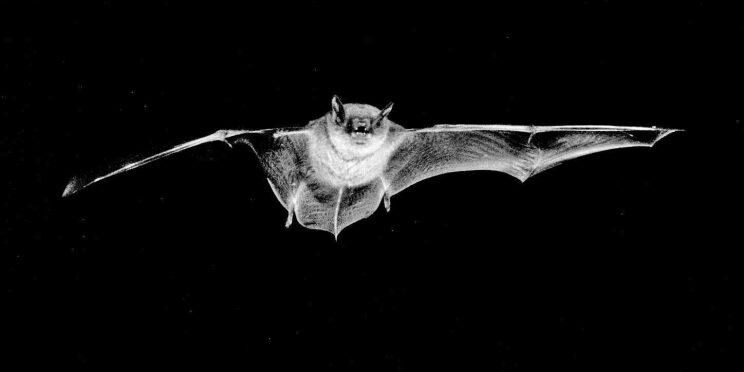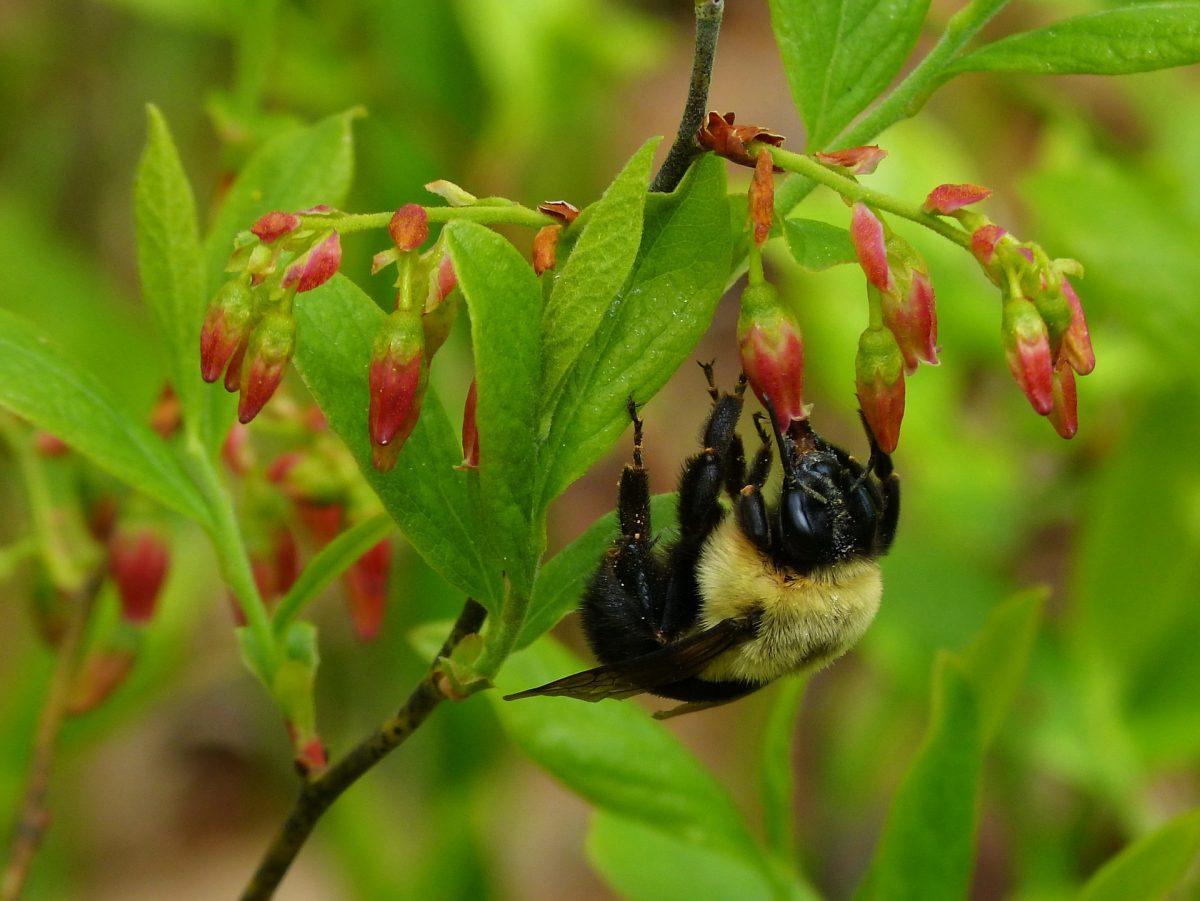by Christianna, High Park Nature Centre
In the warm summer months just after sunset, thousands of pairs of furry wings take to the skies of Toronto. These are bats, the world's only flying mammals and they are doing humanity a service by eating more than half their body weight in insects every night!
Before the spread of human settlement, two common species in Toronto, big brown bats and little brown bats, would roost under loose bark or in small cavities of trees, but as the city developed these species switched to human-made roosting sites such as buildings, barns and the undersides of bridges. This adaptation has likely contributed to their relative abundance (although little brown bat is now becoming rare due to White Nose Syndrome).

Little Brown Bat (Myotis lucifugus)
The little brown bat weighs between 5 and 14 g, about the same weight as 2 quarters! When flying, it looks much larger because of its 25 cm wingspan. Little brown bats fly at average speeds of 20 km/hour but can reach speeds as high as 35 km/hour.
Until recent years, little brown bats could often be found after dark in High Park from late spring to early fall, dipping and swooping for insects along the shorelines and in woodlands adjacent to ponds and wetlands such as the eastern shore of Grenadier Pond. Little brown bats emerge from their roosts at dusk and will travel several kilometres to reach their feeding sites. The majority of their feeding activity occurs 2 to 3 hours after sunset and they use echolocation to find their prey. They catch free-flying insects such as midges, beetles, moths and occasionally mosquitoes.
When temperatures begin to drop and food becomes scarce the little brown bat will travel up to 150 km to reach hibernation sites such as mines or caves where the temperature remains above freezing through the winter. These sites may be occupied by up to 300 000 individuals. In spring the little brown bats rouse from their torpor and leave the hibernaculum, spreading across southern Ontario and returning to the vicinity of High Park to raise their young and feast on insects.
Sadly, these once common bats are now rare and possibly absent from High Park due to White Nose Syndrome.
Big Brown Bat (Eptesicus fuscus)
Despite its name, the big brown bat is actually quite small with an average weight of only about 20 g and a wingspan of roughly 30 cm. It has 32 sharp teeth that allow it to crunch through a beetle’s hard shell and to eat larger insects such as moths, flies, wasps and dragonflies. In good weather big brown bats begin foraging about 20 minutes after sunset.
Like the little brown bat, they can often be seen along the edges of waterways and in open woodlands, especially near ponds and streams. In High Park they can often be seen foraging in the Hillside Gardens and along the shoreline of Grenadier Pond or the Duck Ponds. They will eat until they’re full and then digest at a night roost under eaves or a porch where they’re hidden from predators. Before dawn they will return to their day roosts in the walls or eaves of buildings.
A big brown bat must eat enough through the summer months to accumulate fat reserves of up to one third of its body weight before hibernation. This fat storage allows big brown bats to hibernate in less insulated structures than other bats such as buildings, storm sewers or mines.
Two migrant species of bats that can sometimes be seen in High Park are the Hoary Bat (Lasiurus cinereus) and the Red Bat (Lasiurus borealis).
White Nose Syndrome
White Nose Syndrome (WNS) has seriously affected bat populations in North America. "Of Ontario’s bats, populations of little brown myotis bats, northern long-eared myotis and tricolored bats have been so affected that these are now considered provincially and nationally endangered, while the eastern small-footed myotis is considered endangered in Ontario. Silver-haired, eastern red and hoary bats do not seem to be susceptible to WNS, while big brown bats may be affected but have shown considerable resistance to the disease. As WNS continues its relentless march throughout North America, one hope is that surviving bats may develop a resistance to this disease as is shown in European species." Source: Ontario Nature Bat Guide
Sources
See also
- High Park Wildlife at Night - Bats
- Mammals of Toronto's High Park
- Citizen Science in High Park
- A Guide to Bats in Ontario from ON Nature.
- Article "On Bat Patrol" in ON NATURE Magazine Fall 2017, see pages 30-35.
- Article on Toronto.com "Bat study brings academics to High Park for trapping, tagging and releasing", 2015.
- Article on The Star "Toronto’s bat population in spotlight at nature centre", 2014.
- High Park Urban Bat Project. Long-term monitoring results 2014-2015. PDF (2 Mb).
- Male and female bats differ in their use of a large urban park. Journal of Urban Ecology. Krista J. Patriquin et al, 2019. PDF





















